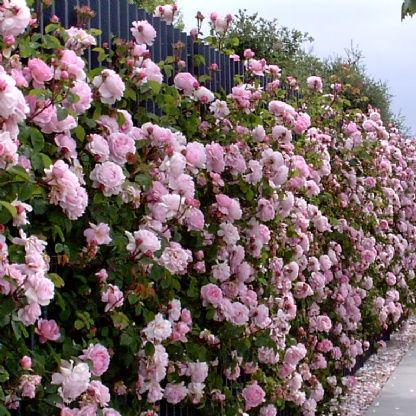Our List of Plants That Make Fencing Lush And Attractive
- Nomvelo Soni

- Jun 14, 2023
- 3 min read
Updated: Jun 20, 2023
By Nomvelo Soni
Garden fence ideas can be attractive and practical in other ways even though a fence is typically used to mark a boundary and offer security. Fencing offers the perfect backdrop for plants and safeguards the garden from the harsh winter elements.
We've gathered the best fence decorating ideas to get you started and show that fences don't have to be boring. These decorating ideas have been compiled to perfectly match your other garden design concepts and combine functionality and style.

@davidaustinroses
Here are a few ideas you can consider:
Setup Flowering Vines into the Fence
At the base of your fence, grow flowering vines that you can train to climb the wall. Choose vines that produce lovely blossoms in a variety of colors, such as wisteria, honeysuckle, or jasmine. As they develop, their lush foliage and vibrant flowers will completely cover the fence.
Cover your fence with climbing plants
Pick vibrant climbing plants that you can train to grow along the fence. Clematis, morning glory, bougainvillea, and climbing roses are a few common choices. These plants will give your fence vertical interest and vibrant color.
Decorate a Picket Fence
To create a colorful display, directly attach painted planters in various colors to the fence. To create visual interest, use a variety of sizes, shapes, and colors. To give your fencing life and color, plant flowers, herbs, or even trailing vines in these planters.
Consider using Hanging Baskets
Bright flower baskets can be hung from the fence using hooks or brackets. To guarantee a year-round display of colors, pick a variety of plants with various blooming times. Petunias, geraniums, and pansies are excellent selections for hanging baskets of flowers.
Use Window Boxes on the Fence
Use brackets or directly attach window boxes to the fence, then fill them with vibrant flowers. Select vegetation that can withstand the amount of sunlight the fence receives. Geraniums, lobelia, begonias, and impatiens are popular options.
Climbing Plants
Every yard can benefit from climbing plants, so choose carefully, keeping in mind your soil type and the fence's orientation. There are climbers for every yard. Since they grow vertically rather than outwards, they are also beneficial for small backyards because they occupy so little space. Below we have listed 10 best plant species to cover a fence.
1. Climbing Roses - With their fragrant blossoms and prickly stems, climbing roses add romance and elegance.
2. Grape Vine - Grapevines can cover your fence and bear delicious fruit if you're looking for a practical and attractive option.
3. Wisteria - When trained along a fence, wisteria, which is renowned for its exquisite cascading blooms, can produce an amazing display.
4. Clematis - These flower-producing climbing vines can be trained to cling to a fence and bear lovely flowers.
5. English Ivy - English Ivy is a well-liked option for covering fences because of its quick growth and dense foliage.
6. Honeysuckle - The fragrant flowers on honeysuckle vines can draw hummingbirds and butterflies.
7. Trumpet Vine - This vine is renowned for luring hummingbirds with its vivid orange or red trumpet-shaped flowers.
8. Passionflower - These vines can draw pollinators and produce intricate, exotic-looking flowers.
9. Bougainvillea - This tropical plant grows best in warm climates and makes colorful bracts.
10. Boston Ivy - A deciduous vine called Boston Ivy turns a striking red color in the fall, giving your fence visual interest.
Give a helping hand to wildlife as well. The ecosystem can benefit from walls and fences. While denser coverings, like a wall covered in ivy or vine, can also provide potential nesting sites for birds and are a natural habitat for smaller insects, flowering climbers feed bees, moths, and butterflies. Insect hotels and birdhouses are beautiful and practical border decorations if you prefer your fences to be climber-free.
